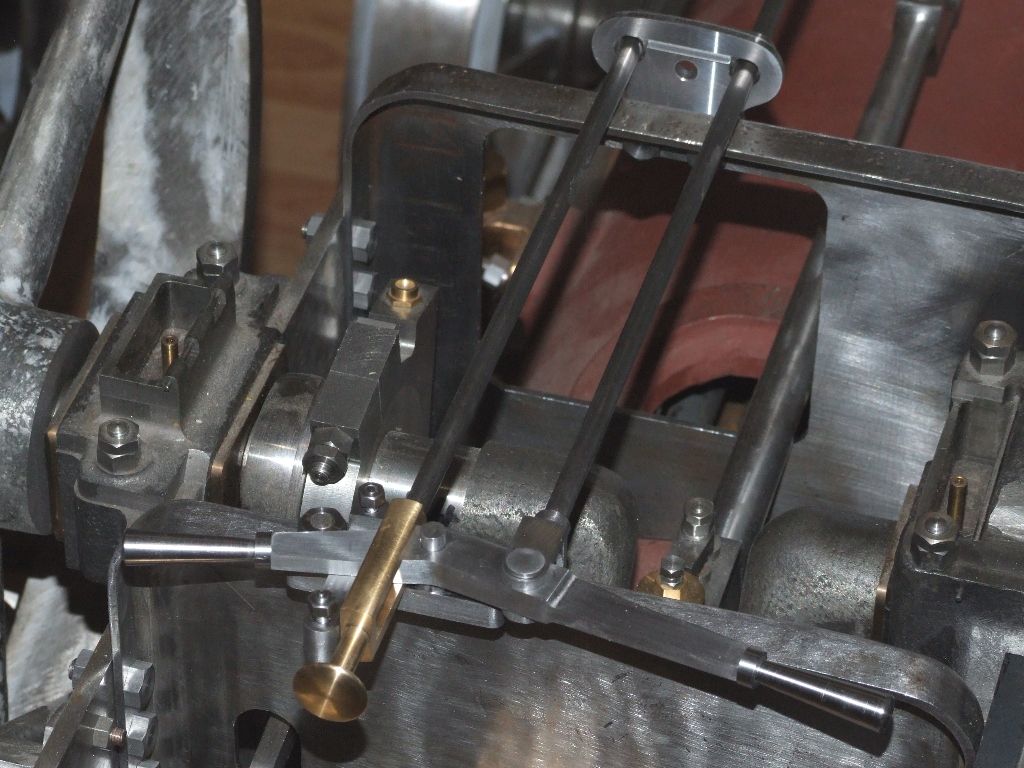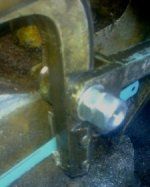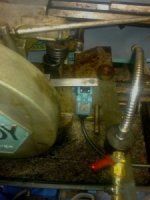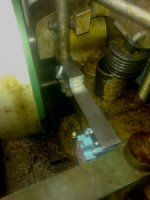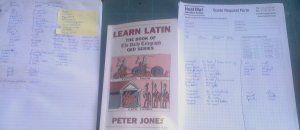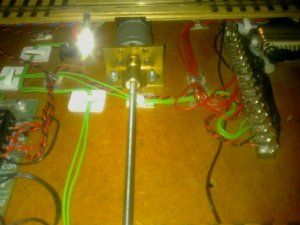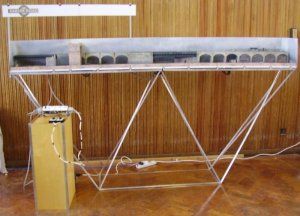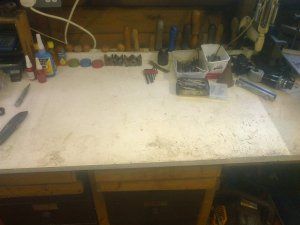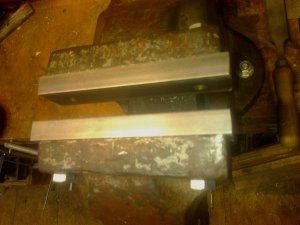Andrew –
Thank you explaining it.
The photo doesn't reveal the general engine type but I know various forms of steam admission were fitted by different makers.
At least one Overtype wagon engine (Foden's?) had a complicated "three-way valve" allowing three different modes.
I have been trying against all odds for far too long to build a 4-inch scale Hindley wagon, unusually with an enclosed, inverted-vertical engine. My source material being no more than 100+ year old advertising photos and texts, one of the first things I discovered was that E.S. Hindley & Sons didn't like too much standardising, to the extent of noticeably different details between the photographed examples in the same trade-magazine review!
Indeed my first attempts at GA drawings came out all wonky because as I realised from further material some three years later, the reviewed lorry was not that photographed for the article. Despite being fully-broadside the picture I used for the scale-data wheelbase and wheel diameters, did not match the quoted dimensions.
I do not claim mine to be any more than a representative model, as true outwardly as possible to the spirit of the variegated examples that emerged in 1908 from the factory in Bourton (near Gillingham, in North Dorset). Indeed, to overcome some of the problems in the most efficient way, I need resort to some non-prototypical practice below the superstructure that will (I hope) hide it from any but the most determined rivet-counters. Still, do you know of many full-size Britannia- or King- class locos with copper boilers and brass tenders, as necessitated in miniature?
=
Why did I choose such a seemingly-hopeless task – and oft did think thus?
I was going to build a Foden C-type, and I like the look of them; but they be common creatures! Then I was inspired as a Dorset resident by an article about the Gillingham' trades and industries, in the historical-magazine Dorset Year Book 1977, illustrated by a photograph of a locally-owned Hindley steam-wagon dressed for Gllingham Carnival c.1908-1910.
Various Hindley plant-engines exist in preservation but no model-engineers and few preservation-engineers seemed to have heard of the Hindley wagon, whose three classes are all extinct, until Richard 'Turbo' Vincent built a full-size replica to commission. Appropriately his engineering works are not far from Gillingham, too.
That rarity further inspired me.
Though I believe mine would have been first in model form had I managed to build it years ago, I know definitely on one finished example also to 4-inch scale. There is another, possibly – I do not know if actually a second vehicle or the same under new ownership.
'
There was incidentally a ' Mendip ' Steam-wagon built by C.W.Harris, in Chewton Mendip. I do know from vehicle registration records and contemporary photos that Harris' bought a Hindley, and the Mendip looks so like the Hindley I suspect pirating despite Hindley having patented its distinctive boiler. Harris later built motor-cars, Mendip-badged – I don't know if any survive.
The patent boiler has a cylindrical (can be rectangular) firebox with a high top, to obviate water-level problems on steep hills; but a very similar pattern was used on the Shay locomotives and a French-made Portable Engine.
(Hindley also took out a rather cheeky patent on a wagon-wheel design. None of the steam-wagons photographed had that pattern, but mine does. So there!)
I know this is not really a competition but I could console myself by claiming mine unique by badging it ' Mendip ', and the Mendip Hills themselves mean very much to me…. Nah, that's cheating! I bain't be Dorset-born but I be Dorset-bred (since 7) and I am staying loyal to E.S. Hindley & Sons of Dorset, not their copy-cats in Somerset.
And if mine is not exactly true to the last rivet… tough!. 
Georgineer.


